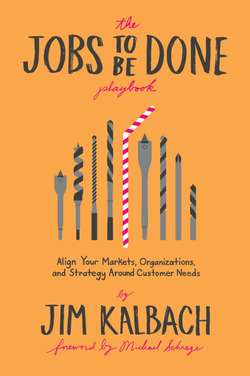Читать книгу The Jobs To Be Done Playbook - Jim Kalbach - Страница 31
На сайте Литреса книга снята с продажи.
Level Set with “Why?” and “How?”
ОглавлениеKeeping your work at the appropriate granularity can be tricky, but part of the territory. Sometimes, you need to know the broadest possible jobs—how customers want to change their lives. Other times, you’ll be operating at a lower level with a narrower scope.
Two simple questions can help you get the right altitude: asking “why?” moves you up in the hierarchy; asking “how?” moves you down. (See Figure 2.7.)
FIGURE 2.7 Ask “why?” to go up a level and “how?” to go down.
For instance, in the case of attending a conference, you might ask, “Why would a job performer want to go to a conference?” The answer might reveal that it’s part of a broader aspiration around professional development. If you then ask again, “Why does the job performer want to develop professional skills?” you might find it’s for career advancement and ultimately to have a better life. Those higher-level aspirations are good to know, and they have potential market appeal. But keep the functional job in mind first. If it doesn’t get done, the aspiration won’t be reached either.
On the other hand, asking, “How does the job performer attend a conference?” you might find the smaller job of convincing a boss to give permission. If you then ask, “How does the job performer convince the boss?” you might find a micro-job of providing a cost-benefit estimation of the event.
You can also use this technique—asking “why?” and “how?”—when interviewing people about their jobs to be done. See more in the next chapter about interviewing. Note that JTBD is not a game of asking the “5 Whys,” a popular technique for root cause analysis that poses the questions “why?” successively five times. Instead, the level of innovation should match your goal, but be broad enough to allow for expansion.
